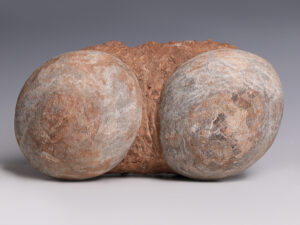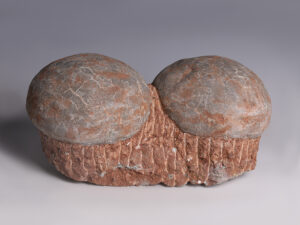Fossilised Dinosaur Eggs
The direct ancestors of the birds of today, dinosaurs laid their eggs on land. Their preservation to the modern day is in part thanks to the porous shell which prevented desiccation and allowed gas exchange. They can be distinguished (though often with difficulty) from calculi, concretions and stones by their uniform thickness and finely pored surface. Apart from their characteristic curvature, the shape of dinosaur eggs can vary greatly: some are almost spherical, whereas others are elongated, with either a rounded or pointed end. Their formal classification, however, is based on the composition of the eggshell units, with main types including the prismatic and ornithoid.
Showing all 3 resultsSorted by latest
Showing all 3 resultsSorted by latest





